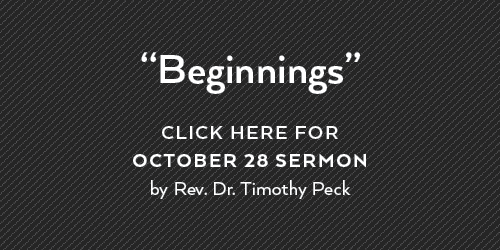Click for a PDF version
Monday
Read Luke 24
Reasons to believe Jesus resurrected from death
While the teachings of Jesus provide invaluable instruction for the Christian life, His resurrection is the essential doctrine of our Christian faith. The Apostle Paul believed the resurrection of Jesus was the basis for Christianity. He wrote: “If Christ has not been raised, our preaching is useless and so is your faith” (1 Corinthians 15:14), and “If Christ has not been raised, your faith is futile; you are still in your sins” (1 Corinthians 15:17).
It’s useful to be aware that stories of the resurrection of deities are not unique to Christianity. Various gods from Greek, Egyptian, Norse, Sumerian and Hindu religions allegedly returned to life from death. The difference is this: Jesus was a real person, not a myth. His physical existence on earth and His resurrection are attested to by numerous sources and unequivocal evidence.
Roman historian Tacitus wrote of Jesus in The Annals of Imperial Rome in the very early 2nd century; and Flavius Josephus, a Jewish historian, wrote of Jesus in the late 1st century. Because of Josephus’ proximity to Jesus in terms of time and place, his writings have a near-eyewitness quality.
In Josephus’ work titled The Antiquities of the Jews, he wrote: “At this time there was a wise man called Jesus, and his conduct was good, and he was known to be virtuous. Many people among the Jews and the other nations became his disciples. Pilate condemned him to be crucified and to die. But those who had become his disciples did not abandon his discipleship. They reported that he had appeared to them three days after his crucifixion and that he was alive. Accordingly, he was perhaps the Messiah.”
The evidence proving Jesus’ resurrection is the topic of the next four devos, but let’s end this segment with, perhaps, the best summation of the importance of Jesus’ resurrection, a quote of renown Christian theologian, Jaroslav Pelikan, who said, “If Christ is risen, nothing else matters. And if Christ is not risen, nothing else matters.”
Questions
Why is it significant that Tacitus and Josephus wrote about Jesus? What did Pelikan mean with his meme concerning Jesus’ resurrection?
Prayers for Ethnos Asia Ministries
Ethnos Asia, headquarters in Bangkok, Thailand, is an organization founded by Asian missionaries to serve churches in Central and Southeast Asia. These churches are often seriously hindered by governmental restrictions and persecuted by anti-Christian radicals. Pray that the Ethnos Asia leaders will have God’s vision and wisdom for doing His work.
Tuesday
Read Matthew 28:1-15; Acts 22:1-16
Reason 1: The empty tomb
After the crucifixion claimed Jesus’ life, some of His followers prepared His body for burial and placed it in Joseph of Arimathea’s tomb. On the morning of the third day following burial, the tomb was discovered empty—Jesus’s body had vanished. The empty tomb is a critical part of the resurrection account, for if Jesus’ body had been recovered, then Christianity would have been proved false. Moreover, since Jesus predicted His resurrection (Mark 8:31; Luke 9:22), He would have been a false prophet if He didn’t rise from the dead.
Jesus’ empty tomb was first discovered by three female disciples. Women were not thought to be as credible as men in 1st century Judea—someone fictionalizing the story of the tomb’s emptiness would have chosen men, not women for this revelation. The tomb had been guarded by a detachment of Roman soldiers, and they made no report of any attempt to steal Jesus’ body. Neither did the Jewish authorities.
Furthermore, there is no explanation of how the heavy stone sealing its entrance had rolled out of the way. Lastly, the tomb was owned by a well-known person, so there is no good reason to think that Jesus’ followers had mistakenly gone to the wrong tomb. The Jewish and Roman authorities had the resources and motivation to search for the body, so its burial place could not have been a problem of mistaken location.
Reason 2: A brief time frame between the events and eyewitness reports
Support for the factual nature of Jesus’ resurrection from the dead comes from the eyewitness testimonies that were reported soon after the events happened. The apostle Paul claims both that he saw the resurrected Christ (Acts 9:1-19; 22:6-16; 26:12-23) within a few years of Jesus’ resurrection and of others who witnessed the resurrection (1 Corinthians 15:3) prior to his personal encounter with Jesus. Additional eye-witness reports (Matthew, Luke and John in their respective Gospels and Peter via the Gospel of Mark) of the risen Jesus are recorded before the destruction of Jerusalem in AD 70 or within less than 40 years of the resurrection.
Questions
Why couldn’t the disciples simply steal Jesus’ body and hide? What difference does it make when the story of Jesus’ resurrection was written down?
Prayers for Ethnos Asia Ministries
Pray for Ethnos Asia’s work in Nepal: Last month Ethnos Asia teachers held training sessions for thirty local Nepali leaders and a similar gathering for thirty Tibetan leaders. Pray for those who attended that they will faithfully persevere in spite of the difficulties they face and labor with great spiritual power bearing abundant fruit.
Wednesday
Read 1 Corinthians 15:1-23; Acts 1:1-11
Reason 3: The multiple appearances of Jesus after His death
- John 20:11-17 notes Mary Magdalene as the first person to see Jesus alive again.
- Matthew 28:9-10 records Jesus also appearing to the other Mary and Salome (Mark 16:1) the same day.
- Luke 24:34 notes Jesus appearing to Peter on the Sunday of His resurrection.
- In Luke 24:13-32, two followers of Jesus are walking from Jerusalem to Emmaus. Jesus appears, though they do not recognize Him until the end of the account.
- After Jesus appeared to them, they returned to Jerusalem to tell the apostles. While there, Jesus appeared to ten of the apostles, all except Thomas (Luke 24:33-49).
- John 20:26-30 records Jesus appearing to all eleven apostles including Thomas “a week later” at a home in Jerusalem.
- John records seven apostles on an all-night fishing trip on the Sea of Galilee ten days after His resurrection. This group included Simon Peter, Thomas, Nathanael, James and John (the sons of Zebedee), and two unnamed apostles (John 21:1-14).
- In 1 Corinthians 15:6, Paul notes five hundred people who saw the risen Jesus at one time. He also notes most of these people were still alive about twenty years later.
- In 1 Corinthians 15:7, Paul also records Jesus appearing to James, the brother of Jesus.
- Matthew’s Gospel ends with the risen Jesus meeting the apostles in Galilee (Matthew 28:16-20). He gives the Great Commission to His followers, telling them to make disciples of all nations.
- Acts 1:4-9 records the ascension of Jesus forty days after the resurrection. This would have been ten days before Pentecost (Acts 2).
- Both Acts 9 and 1 Corinthians 15:8 note Jesus appearing to Paul (then Saul) on the road to Damascus. Though outside of the period of forty days following the resurrection of Jesus, it was clearly Jesus (Acts 9:5).
The diverse locations and varied nature of the appearances makes it extremely improbable to account for these encounters in terms of hallucinations. The meeting with the disciples, including Thomas, seems to prove it beyond doubt.
Questions
What is the significance of seeing Jesus after He had died?
Why would the meeting between Jesus and Thomas be significant?
What is the significance of Thomas’ response to seeing Jesus?
Prayers for Ethnos Asia Ministries
Ethnos Asia’s work in Nepal: A Tibetan youth, from a village where outside Christian pastors had been trying for years to penetrate, recently was saved. Pray for his protection from enemy attacks and that he will be discipled so that he will be able to reach his own family, village members, and plant a church.
Thursday
Read 1 Corinthians 15:1-23; Acts 1:1-11
Reason 4: The naturalistic explanations of the resurrection are not believable.
The “Swoon” Theory. Premise: Jesus did not actually die, but He went into a deep coma (or “swoon”) from the severe pain and trauma of the crucifixion. However, in the cool atmosphere of the tomb, He “revived” and endured 40 hours without food or drink, was somehow able to get out of the strips of cloth wrapped tightly around His body, pushed the 1000-pound stone from the tomb’s entrance, overcame the Roman guards, and then appeared to His disciples in multiple locations miles apart. He would have even needed to walk through walls in one instance. This is an absurd theory that cannot be supported by science or logic. Jesus’ death was first observed by the Roman soldiers who would have been experts on knowing if someone was dead.
The “Mass Grave” Theory. Premise: Jesus was never put in the tomb to begin with. Instead, He was thrown into a mass grave for criminals, according to Roman custom. If this was true, neither the Jewish leaders nor the Roman soldiers would have bothered to seal the tomb knowing His body was not in there (Matthew 27:62–66).
The “Mass Hallucination” Theory. Addressed by the multiple, varied appearances mentioned in reason number two.
The “Stolen Body” Theory. Premise: Jesus’ disciples took His body. This is addressed in the rebuttal to the “mass grave” theory. Furthermore, Jesus’ enemies would not have stolen His body because His resurrection was the very thing they were trying to prevent. It would have defeated their own purposes to do so. If they had taken it, they would have produced it to prove that He was no longer alive.
Questions
Why is the “swoon theory” unbelievable? Why is it easier for some to believe the naturalistic explanations rather than the Bible’s account of the resurrection?
Prayers for Ethnos Asia Ministries
Ethnos Asia’s work in Sri Lanka: Buddhist fanatical mobs have been attacking Christian churches. Pray for God’s protection and for church leaders to have the Lord’s wisdom in dealing with the attackers. Pray for the Christians that they will remain strong in their faith and confident in the Lord in the midst of the persecution.
Friday
Read Matthew 26:55-75; John 21:18-19
Reason 5: The most compelling proof—the transformation of the apostles
When Jesus was arrested, His followers denied they even knew Him. They were scared to death and went into hiding. If He didn’t come back to life, where did they get the courage to oppose the authorities in Jerusalem, Antioch, Damascus, Ephesus, Athens and Rome? Those same authorities had just put Jesus to death!
The eleven remaining disciples had been with Jesus for three years. They watched as He taught the crowds and performed miracles. They witnessed His triumphant entry into Jerusalem, His arrest, His trial, and His execution. They laid His body in the tomb and sealed it. Would these eleven men, threatened with a similar fate, then have perpetuated the story of Jesus’ resurrection if they knew He didn’t rise from the dead? Furthermore, if they did, would they also be willing to each die a gruesome death on His behalf, knowing His resurrection was a lie? No way.
Over the course of history, countless individuals have died for their beliefs, but no one has ever sacrificed his or her life for a known fraud. Those eleven men did not believe Jesus rose from the dead—they knew He rose from the dead.
Paul’s encounter with the risen Jesus was even more dramatic. He wasn’t a follower of Jesus; he was a persecutor of Jesus’ followers—responsible for their capture and execution. Jesus appeared to Paul while he was on a mission to Damascus to find and persecute Christians. His conversion to Christianity was a total reversal of his theology. After seeing Jesus, Paul likewise did not believe Jesus rose from the dead—he knew Jesus was alive, was the Messiah, and ruled the universe from the right hand of God.
The knowledge of Jesus’ resurrection was the unequivocal proof of His divinity that emboldened His followers to remain faithful, even unto death, and, consequently, enable His church to survive the horrible persecution of the second and third centuries. The truth of the resurrection is the historical reason for the emergence of Christianity, as well as its foundational doctrine.
Questions
How was Paul’s encounter with the resurrected Jesus different than the other apostles? What is the difference between “believing” and “knowing”?
Prayers for Ethnos Asia Ministries
Ethnos Asia’s work in Myanmar (Burma): The Myanmar government has been bombing Karen tribal villages, an ethnic-minority Christian group. In one village bombed last month, fifty-one families had to flee into Thailand. Pray for Christians in Thailand who are trying to help them and for their leader, Pastor Robert, who recently came down with COVID.
Sources
- Cornelius Tacitus, The Annals of Imperial Rome (Written around AD 105. Translation by Michael Grant was first published in 1956 in England by Penguin Books.)
- Flavius Josephus, The Antiquities of the Jews (Published AD 93 or 94. Published in English in 1602).
- Jaroslav Pelikan’s quote can be found at https://www.azquotes.com/quote/579406.


